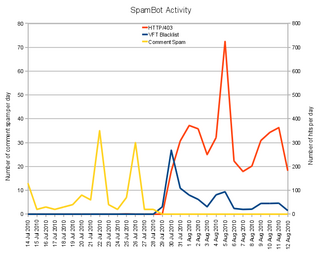So far in my amateur radio career, I have not been able to offer much that may be of use to other hams. That changes today. A while back, when I was dreaming about where to put my antennas safely, I did a lot of research about radio frequency exposure. I poured over OET Bulletin 65, which details the FCC’s limits on human exposure to RF electromagnetic fields. They have formulas and tables and forms to fill out. It is all wonderful and fine, if you live in the 1960s. Welcome to the 21st Century. We live in a world of computers to do all that number crunching for you. I looked around for any web-based things that would help, but the closest I could find was power density calculator written by W4/VP9KF. This is fine if you want to do it for EVERY band on EVERY transmitter each time you make a change to your station. Plus, it means that I have to transmit all that data to his PHP script, which does the calculations and sends them back. We have this great thing in web browsers called JavaScript, which is more than powerful enough to do the work. I set upon creating a JS-only version of his creation. But it still lacked the memory—I would still need to re-enter for each band for every change. And it wouldn’t let me view multiple bands at once. Bigger calculator!
This is where my offering steps in. My requirements:
- Save my data so I don’t have to re-enter everything in every time
- Something I can share with others, without saving their data on my server
- Let me add, edit, delete at will
- Something that can show all my transmitter/antenna/connection information at once
Seems easy enough, right? It was the first two that really got me stuck. I whipped up a little JavaScript ditty that fulfilled number four in very little time at all. Number three was dependent upon the first two and was technically the hardest, but once I had the first two figured out, it was only coding, which I enjoy.
And this is what I came up with: N7OH RFE Calculator. Take it for a spin, share it with your friends. Upon your initial visit, it may not look like much, but if you move over to the “Import/Export” tab, you can press the “Reset to sample data” button and see it in action. Please offer suggestions and comments if you find it to be too difficult to use or see something that might make it better.
As for fulfilling my four requirements, the first two were done once I learned about local storage with HTML 5. This means that your web browser is storing the data. Not as a cookie, but similar. Cookies get sent back to the server with each request. Local storage is meant to be persistent data that a web page can access via JavaScript to be used locally. This means I can save my data on my machine and your data on your machine. I can host the page for everyone, yet not save everyone else’s data on my server. The add/edit/delete requirement was probably the most fun I have had with jQuery to date. And I hardly scratched the surface of what it can do. Lastly, the glory of the Results tab just makes me weak in the knees. Okay, not really, but it is the crown jewel of the whole application. It shows all the stuff you want to know about your radio setup.

